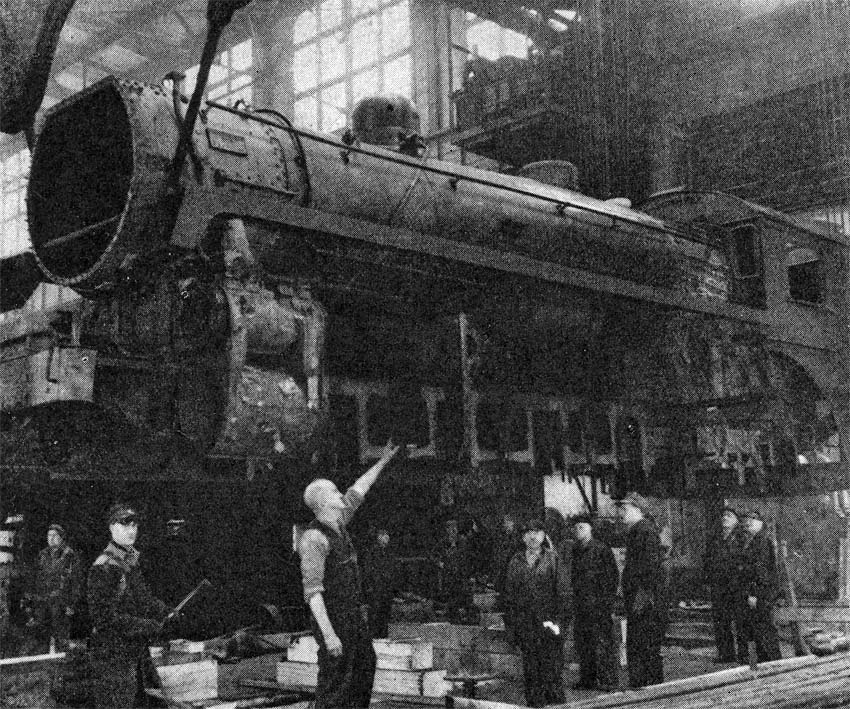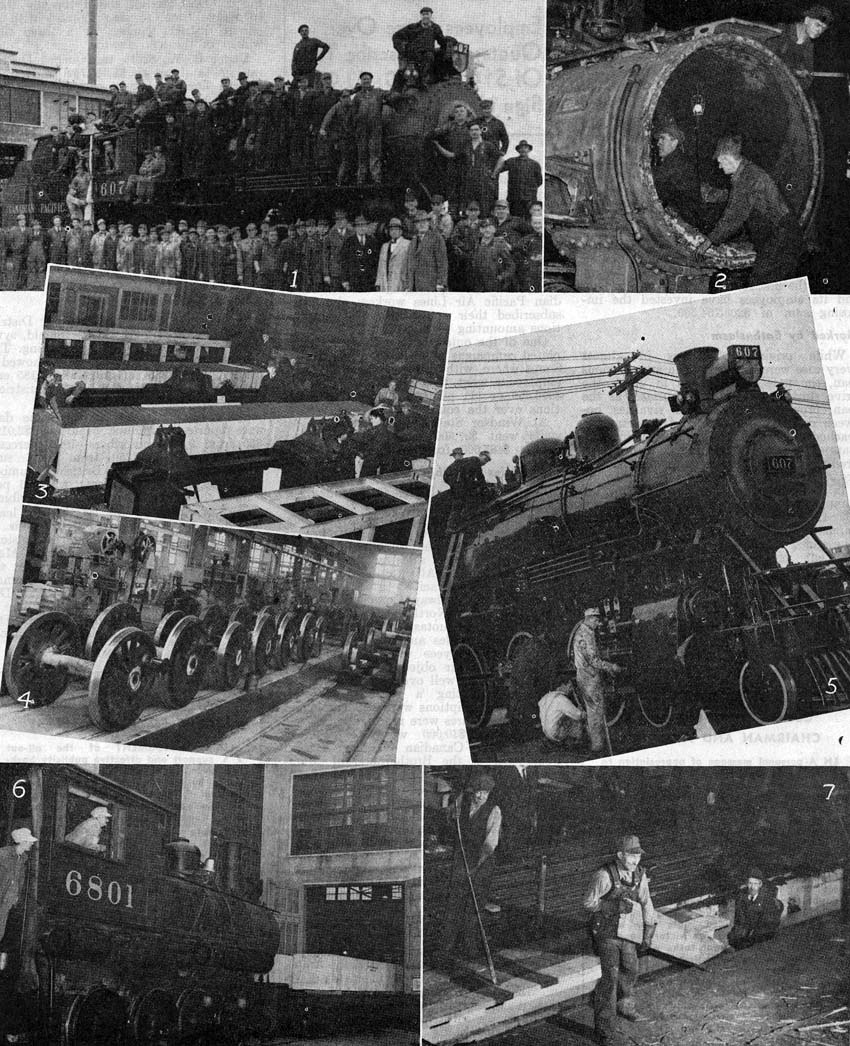
Canadian Pacific Staff Bulletin - December, 1945

Workers at Ogden Shops gave way to lusty cheers on 23 Oct 1945 as Engine No. 607, gleaming in her new
paint, swung out through the huge doors to return to service after a complete overhaul.
To the casual onlooker such a sight may have seemed strange at a glance, shopmen giving vent to all this enthusiasm over one engine!
Engine 607, however, was no ordinary engine in the eyes of Ogden's rank and file. A symbol of peacetime, Engine 607 was the first locomotive to go through Ggden since March, 1941, when the locomotive shop, covering six acres, and one of the largest in the Dominion, was converted to the manufacture of armaments.
It was on 1 Sep 1945 that the Department of Munitions and Supply relinquished the big plant and permitted the Canadian Pacific Railway to resume normal peacetime operations. Engine 607 was admitted to the shop on 15 Sep 1945 to be followed by other engines, and the work of overhauling locomotives and repairing them went on simultaneously with the removal of certain armament machines and a general re-arrangement of the shop.
Fastest Reconversion Job
One of the fastest reconversion jobs ever attempted, Ogden is reverting to its peacetime role on a large scale and it will not be long before the whole long line of 30 engine pits, each long enough to accommodate the Canadian Pacific's heaviest and longest locomotive, will be working full blast.
The shop presented a deceptive picture of apparent confusion as workmen ripped up the planks which covered the engine pits during the shop's service as an armament plant, took down and crated war mackines no longer required, set up other machines in different locations, laid track over the concrete floors, installed a battery of furnaces, set up a new wheel shop, and other shops within a shop.
Sense of Pride
Among the thousand men who are today working at Ogden, in the main locomotive and the tender and store order shops, powerhouse, stores department, offices, mill coach and freight car shops, a veritable little industrial empire out in East Calgary, there is an unmistakable sense of pride in the fine new plant that is taking shape before their eyes.
Men who labored at the benches there when the shop first opened in 1912, just in time to play a notable role in the production of an earlier world war, are noting the changes with special interest, realizing how far the shop has come since then.
There is pride too, in Ogden's recent war-time production. J.L. Gubbins who was in charge of the munitions department while the shop was in war work estimates the value of war work done in the huge building at $25,544,680, including some $544,765 of miscellaneous contracts for other Canadian Pacific shops.
Imposing Armament Output
The list of items turned out at Ogden for the prosecution of a victorious war is long and imposing, 1,001 12-pounder guns Mark V, 1,050 12-pounder gun mountings Mark IX, 2,000 6-pounder gun barrels Mark V and VI, 501 American housings Mark II, 572 Bofor gun mountings Mark III, 989 4-inch gun sights Mark XXIII, 35 4-inch gun mountings Mark III, and 60 4-inch gun mountings Mark XXIV.
Looking back on pre-war days when they turned out as many as 28 engines in a month, more than one per working day, Ogden men have no misgivings about the future. There will be plenty of work for the big locomotive shop, passenger coaches to be remodelled and converted for postwar comfort will keep that shop busy, while the freight car shop has maintained its production throughout the war.
Ogden's reconversion to locomotive repairs will ease the load from some of the other shops like Weston Shops in Winnipeg, which, with smaller shops scattered through the west, had to take up the slack when Ogden's facilities were diverted to the war effort.
Alyth's Record Outstanding
One of the shops which performed yeoman senrice, and is still doing so, is the Alyth shop, in Calgary, which was extended to take charge of some of the No. l's, which is what the railwaymen call a general locomotive repair job. At the present time work is proceeding extending stalls on the Alyth roundhouse and shop.
Alyth, of course, services for running repairs the largest locomotives in the Empire, the 5900 class
operating between Calgary and Revelstoke. During the war this comparatively small shop tackled full repair jobs
on these behemoths of the rails, and with great credit to the organisation.

 and is reprinted here with their permission. All photographs,
logos, and trademarks are the property of the Canadian Pacific Railway Company.
and is reprinted here with their permission. All photographs,
logos, and trademarks are the property of the Canadian Pacific Railway Company.